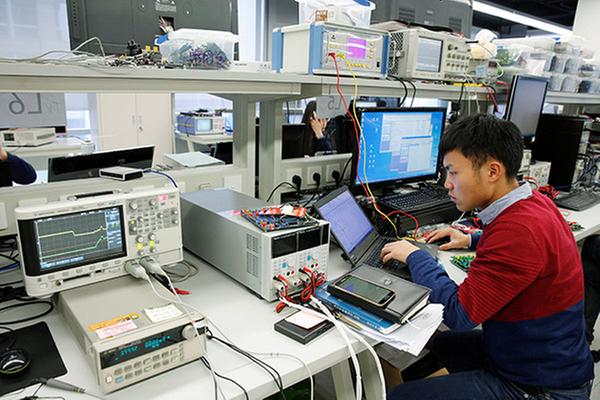Next: Homegrown semiconductors of the 5G tech variety
By Ma Si | China Daily | Updated: 2017-06-12 07:20
 |
| A researcher works at Tsinghua Unigroup research center in Beijing, China, February 29, 2016. [Photo/Agencies] |
Spreadtrum RDA, the mobile-design subsidiary of China's largest chipmaker Tsinghua Unigroup Ltd, aims to unveil 5G smartphone chips in 2018.
The move is part of its plan to gain an early lead in the next-generation mobile communication technology, and follows the agreement with Britain's Dialog Semiconductor Plc in March to develop smartphone chips and mobile power management technology.
Dialog's chips already power Apple Inc's iPhones and iPads.
Kang Yi, global advance technologies & projects vice president at Spreadtrum, said the company has started research and development of 5G chips and is playing an active part in China's 5G trials.
"We teamed up with Huawei in the first phase of trials to verify key 5G technologies last year. Now we are a part of China's second phase of experiments, which will test key technological solutions," Kang said.
According to him, the company plans to launch standards-based mobile 5G chips as soon as a global 5G standard is rolled out.
The 3rd Generation Partnership Project, or 3GPP, is an industry coalition dedicated to promoting global wireless communication standards. It decided to accelerate some elements in the 5G New Radio, or NR, specification. NR is essential to accelerate the commercial applications of the technology.
According to the expedited schedule, 5G NR specifications are to be completed in December,which is expected to give Spreadtrum RDA's 5G launch plan a shot in the arm.
Spreadtrum RDA came into existence after Tsinghua Unigroup bought Spreadtrum Communications and RDA Microelectronics Inc three years ago and merged them into a new company.
It is locked in fierce competition with MediaTek Inc in the market for lower end smartphone chips, and hopes to join the ranks of global giants such as Qualcomm Inc in the premium segment.
"The design of 5G chips is definitely more sophisticated, for the new technology demands faster speed and quicker response, which complicates the task of balancing power and performance, and integrating resources and lower costs," Kang said.
The company's R&D of 5G chips starts from 12 nanometer technology and plans to leverage a more advanced 7 nanometer technology for mass production. Nanometer technology refers to a technical standard used in chip device fabrication.
Spreadtrum RDA is part of Tsinghua Unigroup's broad efforts to develop homegrown chips so as to reduce China's reliance on foreign semiconductors.
Unigroup signed agreements in March that would grant it up to 150 billion yuan ($21.8 billion) in financing, which would enable it to expand its chip business.
It is working on a $30 billion domestic chip production complex in Nanjing, Jiangsu province. When completed, it would be China's largest such facility.
In 2016, Spreadtrum RDA shipped 600 million smartphone chips, accounting for one-fourth of the world's total shipments.
























